Ai sounds
0 likes298 views
This document contains a list of words repeated in a seemingly random order with no context or connection between the words. The words include common nouns like rain, sail, pain, tail, mail, paint, Spain, and afraid.
1 of 10
Download to read offline
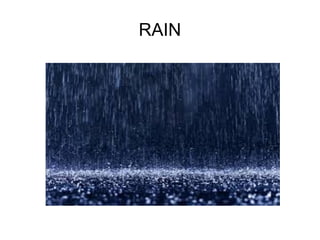
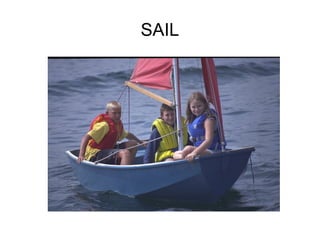
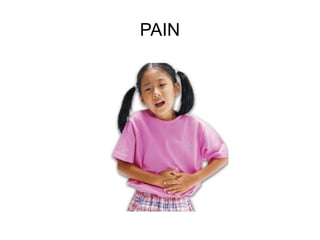
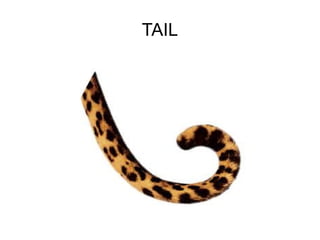

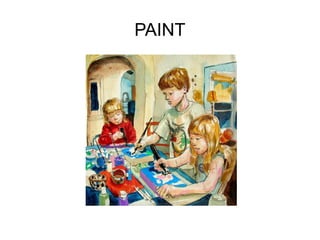




Ad
Recommended
Tell me your dreams
Tell me your dreamsmobrze
Ã˝
The document is a request from students in Class III B for others to share and draw their dreams. The students repeatedly ask others to "Draw me your dreams" and share what they see in their dreams. They sign off at the end by saying "Bye for now!!!" in under 3 sentences to summarize the key details.Seasons and months
Seasons and monthsVioleta Membrado
Ã˝
This document outlines the four seasons of the year - winter, spring, summer, and autumn - listing the months that comprise each season in a cycle that begins and ends with winter. Winter includes December, January, and February. Spring runs from March through May. Summer is from June through August. Autumn spans September through November, completing the seasonal cycle.Personal pronouns 2nd of primary
Personal pronouns 2nd of primaryVioleta Membrado
Ã˝
The document is a lesson on pronouns that introduces the pronouns "I", "you", "he", "she", and "we" with example sentences. It then repeats the sentences with blanks for the reader to fill in the appropriate pronouns. The document teaches about different personal pronouns through examples and interactive blanks for the reader.OteloShirley Córdova
Ã˝
El documento resume la trama de la obra Otelo de William Shakespeare. En la tragedia, el general moro Otelo se casa con Desdémona pero empieza a sentir celos infundados por culpa de las manipulaciones de Yago, quien quiere el puesto de Otelo. Yago provoca los celos de Otelo haciéndole creer que Desdémona es infiel. Otelo, engañado, estrangula a su esposa. Al descubrir la verdad, se suicida.Federico Garcia Lorcasegundocarmen
Ã˝
Federico García Lorca escribió la obra teatral "Bodas de sangre" en 1931. La obra trata sobre los celos, la persecución y la muerte a través de símbolos y costumbres de Andalucía. Lorca utiliza la luna como símbolo recurrente de la muerte. La obra explora temas como el amor, el deseo y la esterilidad a través de un estilo poético que incorpora elementos folclóricos de la región.Charles GounodAlfredo Vazquez del Mercado
Ã˝
Charles Gounod (1818-1893) fue un destacado compositor francés, conocido por su música lírica que refleja el romanticismo francés y por ser el autor del famoso 'Ave María'. Su carrera incluye numerosas obras, como 12 óperas y 50 misas, siendo 'Fausto' y 'Romeo y Julieta' algunas de sus más reconocidas. A lo largo de su vida, Gounod recibió varios honores, y su legado musical perdura, destacándose por la calidad de su escritura orquestal y melodiosa.Giuseppe Verdi BiografiaAlfredo Vazquez del Mercado
Ã˝
Giuseppe Verdi fue el compositor más famoso de ópera romántica italiana del siglo XIX. Compuso algunas de las óperas más populares como La Traviata, Rigoletto e Il Trovatore. Tuvo dificultades personales como la muerte de su esposa e hija pero también logró grandes éxitos con obras como la trilogía romántica.AntigonaPaola2_8Leiton
Ã˝
El documento resume la obra Antígona de Sófocles. Narra que los hermanos de Antígona, Eteocles y Polinices, se matan mutuamente después de una guerra. Eteocles es enterrado pero Creonte, rey de Tebas, prohíbe el entierro de Polinices. Antígona desafía la orden de Creonte y entierra a su hermano, por lo que es arrestada y condenada a morir en una cueva. Esto lleva al suicidio de Hemón, hijo de Creonte y prometRecycling
RecyclingVioleta Membrado
Ã˝
Used aluminum cans, glass bottles, and newspapers can be recycled and turned into new materials. Aluminum cans can be recycled into new cans. Glass bottles can be recycled into new bottles and jars. Newspapers can be recycled into new paper.Face parts
Face partsVioleta Membrado
Ã˝
This document describes the features of a human face including the mouth, eyes, nose, ear, chin, hair, cheeks, nostrils, eyebrows, eyelashes, eyelids, ear lobe, forehead, and tongue.Bingo phonics
Bingo phonicsVioleta Membrado
Ã˝
This document contains 3-letter words starting with each letter from B to U. For each letter, there are 3 words provided that start with that letter. The words cover a range of categories including family, animals, objects, and more.Class materials
Class materialsVioleta Membrado
Ã˝
This list includes school supplies such as a pencil case containing pens, color pencils, and a rubber eraser, as well as a schoolbag, crayons, a blackboard and digital board for lessons, books, scissors, a sharpener, and sellotape.Diapositivas curiosidades virusVioleta Membrado
Ã˝
Este documento presenta información sobre los virus. Explica que los virus son microorganismos visibles solo con microscopio, no son seres vivos porque no se nutren, reproducen o relacionan como las bacterias, y pueden causar enfermedades cuando infectan a otros organismos. También indica que la gripe, la rabia y el SIDA son enfermedades causadas por virus, mientras que el tétanos es causado por una bacteria; y que las vacunas y una buena higiene personal son formas efectivas de prevenir infecciones virales.Places in a town
Places in a townVioleta Membrado
Ã˝
This document describes various places found in a town, including shops where you buy food and household items, restaurants where you eat meals with family, stations to catch buses or trains, cinemas to watch films, libraries to borrow books or study, pools for swimming, hospitals where ill people go that have doctors and nurses, parks as green spaces to play with balls or friends, schools that children attend to learn taught by teachers, and museums to see historical objects and learn about the past.What time is it
What time is itVioleta Membrado
Ã˝
The document discusses telling time using common phrases like "five o'clock", "half past nine", "quarter past ten", and "quarter to two" to describe times of day. It prompts the reader to state what time it is using similar terminology.Let it go
Let it goVioleta Membrado
Ã˝
The speaker finds themselves isolated in a kingdom covered in snow, with no footprints around them. Struggling to contain their emotions, they decide to let go of their feelings and concealments, embracing who they are and letting the storm rage freely without caring what others say. They feel empowered as the cold has never bothered them anyway.Olaf summer song part 1
Olaf summer song part 1Violeta Membrado
Ã˝
The document describes looking forward to summer activities like enjoying drinks outside and getting a tan on the beach while a summer breeze blows away the winter. It also looks forward to seeing what friends think of the speaker when solid water gets warm in summer and how much cooler the speaker will be during the summer season.Actions and hobbies 2
Actions and hobbies 2Violeta Membrado
Ã˝
This document lists several activities that the author enjoys doing, including hopping, playing musical instruments like the piano and guitar, climbing, skiing, and playing sports.Actions and hobbies 1
Actions and hobbies 1Violeta Membrado
Ã˝
This document lists several abilities such as talking, writing, walking, jumping, swimming and running. It describes various physical and verbal skills that one is capable of performing. In short, the document outlines different actions and activities a person can do.Recycling
RecyclingVioleta Membrado
Ã˝
This document provides instructions for sorting different types of waste materials, with cardboard and plastic recommended to be sorted together in one bin, plastic and aluminium in another bin, and organic waste such as food scraps in a third bin.More Related Content
More from Violeta Membrado (20)
Recycling
RecyclingVioleta Membrado
Ã˝
Used aluminum cans, glass bottles, and newspapers can be recycled and turned into new materials. Aluminum cans can be recycled into new cans. Glass bottles can be recycled into new bottles and jars. Newspapers can be recycled into new paper.Face parts
Face partsVioleta Membrado
Ã˝
This document describes the features of a human face including the mouth, eyes, nose, ear, chin, hair, cheeks, nostrils, eyebrows, eyelashes, eyelids, ear lobe, forehead, and tongue.Bingo phonics
Bingo phonicsVioleta Membrado
Ã˝
This document contains 3-letter words starting with each letter from B to U. For each letter, there are 3 words provided that start with that letter. The words cover a range of categories including family, animals, objects, and more.Class materials
Class materialsVioleta Membrado
Ã˝
This list includes school supplies such as a pencil case containing pens, color pencils, and a rubber eraser, as well as a schoolbag, crayons, a blackboard and digital board for lessons, books, scissors, a sharpener, and sellotape.Diapositivas curiosidades virusVioleta Membrado
Ã˝
Este documento presenta información sobre los virus. Explica que los virus son microorganismos visibles solo con microscopio, no son seres vivos porque no se nutren, reproducen o relacionan como las bacterias, y pueden causar enfermedades cuando infectan a otros organismos. También indica que la gripe, la rabia y el SIDA son enfermedades causadas por virus, mientras que el tétanos es causado por una bacteria; y que las vacunas y una buena higiene personal son formas efectivas de prevenir infecciones virales.Places in a town
Places in a townVioleta Membrado
Ã˝
This document describes various places found in a town, including shops where you buy food and household items, restaurants where you eat meals with family, stations to catch buses or trains, cinemas to watch films, libraries to borrow books or study, pools for swimming, hospitals where ill people go that have doctors and nurses, parks as green spaces to play with balls or friends, schools that children attend to learn taught by teachers, and museums to see historical objects and learn about the past.What time is it
What time is itVioleta Membrado
Ã˝
The document discusses telling time using common phrases like "five o'clock", "half past nine", "quarter past ten", and "quarter to two" to describe times of day. It prompts the reader to state what time it is using similar terminology.Let it go
Let it goVioleta Membrado
Ã˝
The speaker finds themselves isolated in a kingdom covered in snow, with no footprints around them. Struggling to contain their emotions, they decide to let go of their feelings and concealments, embracing who they are and letting the storm rage freely without caring what others say. They feel empowered as the cold has never bothered them anyway.Olaf summer song part 1
Olaf summer song part 1Violeta Membrado
Ã˝
The document describes looking forward to summer activities like enjoying drinks outside and getting a tan on the beach while a summer breeze blows away the winter. It also looks forward to seeing what friends think of the speaker when solid water gets warm in summer and how much cooler the speaker will be during the summer season.Actions and hobbies 2
Actions and hobbies 2Violeta Membrado
Ã˝
This document lists several activities that the author enjoys doing, including hopping, playing musical instruments like the piano and guitar, climbing, skiing, and playing sports.Actions and hobbies 1
Actions and hobbies 1Violeta Membrado
Ã˝
This document lists several abilities such as talking, writing, walking, jumping, swimming and running. It describes various physical and verbal skills that one is capable of performing. In short, the document outlines different actions and activities a person can do.Recycling
RecyclingVioleta Membrado
Ã˝
This document provides instructions for sorting different types of waste materials, with cardboard and plastic recommended to be sorted together in one bin, plastic and aluminium in another bin, and organic waste such as food scraps in a third bin.